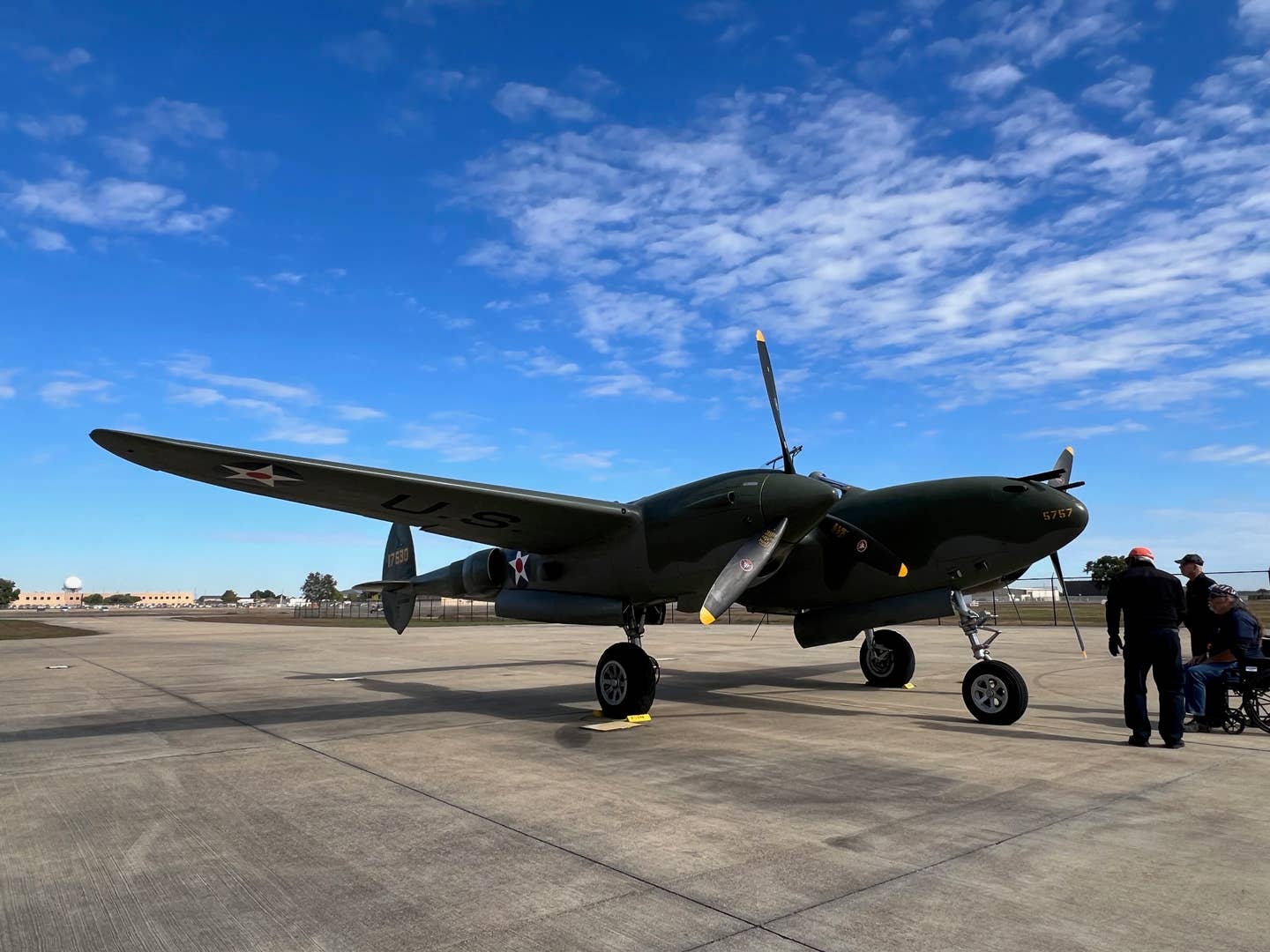‘Glacier Girl’ on Loan to Lone Star Flight Museum
The famous warbird is on temporary display in Houston through the end of January.

Bob Cardin will make a special presentation on ‘Glacier Girl’ at the Lone Star Museum on January 11. [Courtesy: Lone Star Flight Museum]
Lone Star Flight Museum at Ellington Airport (KEFD) in Houston has a special visitor through the end of the month: Glacier Girl, the P-38F Lightning salvaged from beneath 268 feet of ice.
The aircraft is on loan from the Air Legends Foundation. According to museum officials, this is the first time the famous warbird has been on display there.
About the Aircraft
Glacier Girl is part of the so-called “Lost Squadron,” made up of six P-38s and two B-17s that were attempting to fly across the Atlantic in July 1942 as part of Operation Bolero. Bad weather and poor visibility forced the group to turn around, and the aircraft made emergency landings on an ice field in Greenland. There were no significant injuries, and all the airmen were subsequently rescued, but the aircraft remained behind.
Over the decades, stories circulated about the warbirds left on the glacier. It grew to legendary proportions when told around campfires at fly-ins, as it was said the aircraft were parked, frozen in time, and if you could get there, you could fly them out. In reality, decades of winter storms had buried the aircraft under several hundred feet of ice and snow, and the shifting glacier had crushed and torn most of them to pieces.
Through the years, there were at least 12 other attempts to locate and retrieve the aircraft. No. 13 proved to be the charm when Kentucky businessman Roy Shoffner financed the Greenland Expedition Society, a team formed by Patt Epps and Richard Taylor, specifically for the recovery effort. Bob Cardin, a warbird expert, was brought on board as expedition leader. The aircraft had been under the ice a full 50 years by then.
Hear the Story
One January 11, Cardin will be at the museum for a special presentation on the expedition and the process that took Glacier Girl from hunks of frozen metal buried under 27 stories of ice to the flying showpiece it is today. Doors open for the special event at 5:30 p.m. CST. Tickets are available for $30 per person for museum members, $40 for nonmembers.
Cardin, a dynamic and engaging speaker, brings the audience along as the recovery team creates the "Super Gopher," a device that circulates hot water through a metal cone, allowing them to burrow to the aircraft.
The access shaft was 4 feet in diameter and it took approximately 25 minutes to travel from the surface to the aircraft. Sometimes parts of the walls of the ice cavern would fall during the process.
The aircraft had to be dismantled, parts wrapped and secured, then painstakingly lifted to the surface. The final piece was recovered in August 1992. Despite the decades spent under the crushing ice, the team determined the aircraft could be restored. It estimated it would take two years to complete—in actuality, the process lasted 10 years, but the detail is meticulous. Today, Glacier Girl is the only P-38 to have a set of working machine guns.
In 2006, Rod Lewis purchased the warbird and added it to the Air Legends Foundation, which boasts airworthy fighters, bombers, helicopters, and transport aircraft dating to World War II.
More ore information and ticket purchasing is available at the museum or foundation websites.

Sign-up for newsletters & special offers!
Get the latest FLYING stories & special offers delivered directly to your inbox






